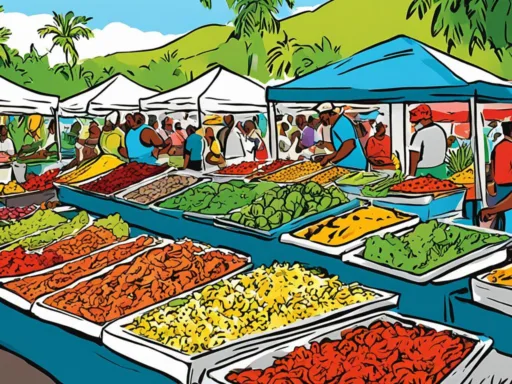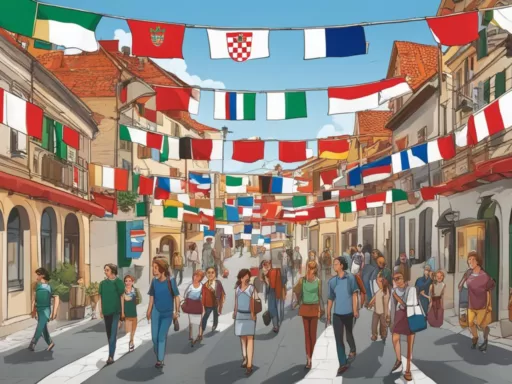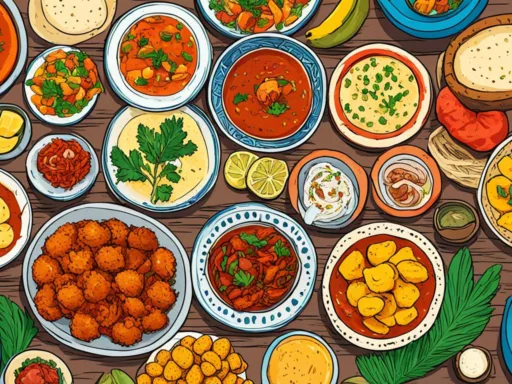Imagine a place where over 200 nationalities converse in more than 100 languages – welcome to the United Arab Emirates (UAE), a melting pot where linguistic diversity shapes the daily social tapestry. Beyond the vast desert dunes and towering skyscrapers, the languages spoken in the United Arab Emirates reveal a fascinating blend of culture and communication. The UAE’s official languages include Arabic, but the paths of trade and migration have brought many tongues to its shores, propelling this Gulf nation into a hub of multilingualism in the United Arab Emirates.
This linguistic plurality goes beyond simple numbers. It encapsulates the vibrancy and openness of a country that celebrates its National Day on December 2nd, not just in Arabic, but in a chorus of dialects and accents. The linguistic diversity in UAE is not just an abstract concept; it’s heard in the bustling souks, seen in the classrooms, and felt in the boardrooms. It is an embodiment of the UAE’s ambition to forge a future rooted in tolerance, innovation, and global connectivity.
Key Takeaways
- Arabic may be the official language, but the UAE’s linguistic landscape is vibrantly multilingual.
- English serves as a crucial lingua franca, facilitating trade, tourism, and everyday communication.
- The demographics of the UAE, comprising mostly expatriates, significantly influence the variety of languages spoken.
- Languages spoken in the UAE span across continents, from Asian languages like Hindi and Malayalam to European and African dialects, reflecting the country’s global cultural integration.
- Understanding the role of language is imperative for anyone looking to visit, work, or integrate into the UAE’s society.
Arabic: The Heart of UAE’s Linguistic Landscape
The United Arab Emirates (UAE) is not only a melting pot of cultures but also a dynamic expanse of language, and at the epicenter is Arabic. This language, in its classical and regional forms, is interwoven throughout the Emirati national identity and serves as one of the pillars of the country’s cultural heritage.
Modern Standard Arabic and Its Role
Modern Standard Arabic is the official language of the UAE, a reflection of its status across the Arab world as the language of formal communication. It is the medium for most written press, literature, educational materials, and is ubiquitously present in governmental and legal contexts. Academic institutions place a strong emphasis on fostering fluency in Modern Standard Arabic, ensuring that the UAE’s citizens are well-versed in what is both a language of daily life and a symbol of unity.
Gulf Arabic: A Dialectal Variation
Gulf Arabic, specific to the Arabian Peninsula, is the mother tongue for the local Emirati population. This dialect retains a sense of authenticity and regionalism amongst the spread of Arabic dialects in the UAE. Gulf Arabic is characterized by distinctive phonetic patterns, vocabulary, and grammatical structures that set it apart from other Arabic variants. It encapsulates the nuances of daily conversation, holding an undeniable charm in its sonic representation of regional identity.
- Linguistic Diversity in the UAE: Both Modern Standard Arabic and Gulf Arabic contribute to the vibrant linguistic diversity of the UAE, where a tapestry of dialects coexists.
- Symbol of Unity: Arabic, in all its forms, not only bridges gaps among the Emirati population but also unites the various communities that call the UAE home.
- The Importance of Preservation: To maintain linguistic diversity and uphold cultural heritage, both UAE’s official languages and its dialects are honored and celebrated.
English: A Lingua Franca in the UAE
In the cosmopolitan hub of the United Arab Emirates, multilingualism has soared to impressive heights, with English at the forefront as a pivotal lingua franca. This is more than just a testament to the language’s global prevalence—it is the fabric that weaves together a nation teeming with diverse expatriates and ambitious businesses. Recognized as one of the primary foreign languages in the UAE, English is utilized across multiple sectors, serving as the connective thread for individuals and enterprises alike.

From bustling marketplaces to the sleek boardrooms of skyscrapers, English is the key to unlocking successful interactions both socially and commercially. Its use extends to international events hosted within the country, where a mix of cultural festivities and business forums attract participants from every corner of the world, highlighting the multilingualism in the United Arab Emirates.
- Trade and Economy: In an economy bolstered by global trade and commerce, fluency in English is not just preferred but expected.
- Tourism: The UAE’s shimmering attractions and hospitality industry cater to an international audience, necessitating English for operation.
- Service Industry: English proficiency remains a staple requirement, facilitating interactions in restaurants, hotels, and transport services.
As a hub of innovation and cultural exchange, the UAE’s adoption of English is a clear nod to its role as a global beacon for business, technology, and education.
The ubiquity of English in the UAE has become more than convenience; it is a strategic element in the nation’s growth and its aspirations to remain a cornerstone in international relations. This dynamic interplay of languages underscores the UAE’s dedication to embracing multilingualism while catapulting its people towards global participation and recognition.
Languages Reflecting the Demographics: The Expat Influence
As the United Arab Emirates (UAE) enjoys an ever-increasing expatriate community, the linguistic diversity in UAE has expanded, offering a rich tapestry of dialects and languages. Reflecting upon the languages spoken in United Arab Emirates, one sees how the expatriate population has cemented itself within the very cultural fabric of the nation, shaping its multilingual characteristics significantly.
Indian Languages: From Hindi to Malayalam
Indian nationals represent a vital segment of the UAE’s expatriate community, and with their presence, they bring a spectrum of languages from their diverse subcontinental heritage. Hindi, the lingua franca of India, and Malayalam, spoken by the people from the state of Kerala, are among the most prominent in the mosaic of multilingualism in the United Arab Emirates. These languages are not only a means of daily communication but also serve as a cultural bridge between the UAE and one of its largest expat communities.
Pakistani and Bangladeshi Linguistic Presence
The South Asian demographic is further complemented by the Pakistani and Bangladeshi expatriates. Urdu, Pakistan’s national language and communication lifeline for many, is widely heard throughout the UAE, whereas Bengali, the language of Bangladeshis, adds its distinct melody to the country’s already diverse linguistic scene.
Below is a representation of the linguistic proportions among key expatriate communities within the UAE:
| Community | Population (%) | Main Languages |
|---|---|---|
| Indian | 27.49 | Hindi, Malayalam, Tamil, Telugu, Gujarati, Punjabi |
| Pakistani | 12.69 | Urdu, Punjabi, Pashto, Sindhi, Balochi |
| Bangladeshi | 7.40 | Bengali |
| Emirati (UAE Nationals) | 11.48 | Arabic |

The prevalent use of these South Asian languages within the UAE’s borders prominently showcases multilingualism in the United Arab Emirates, a country that’s not only a blend of ancient traditions and modern innovation but also a reflection of its people’s varied linguistic roots.
Fostering Ties through Language: Business and Commerce
The United Arab Emirates (UAE) excels as a paradigm of multilingualism in a business context, reflecting the diversity of the most spoken languages in UAE. The versatile language landscape is a crucial element in bolstering international trade relations, attracting investments, and nurturing business connections. In the heart of the Middle East, the UAE has adeptly harnessed its linguistic assets to foster an environment conducive to growth and prosperity.

In the bustling marketplaces and soaring skyscrapers of the UAE, a symphony of languages can be heard, with Arabic and English leading the dialogue. The interplay between these dominantly spoken tongues and an array of Asian and European languages captures the essence of commercial success fostered through linguistic inclusivity. This linguistic diversity is not just a passive reflection of the community but actively shapes business strategies and drives economic ambitions across various sectors such as oil, hospitality, and finance.
Let’s delve into some insightful statistics:
| Language | Relevance in Business Sector | Percentage of Speakers |
|---|---|---|
| Gulf Arabic | Local commerce, Administration | 29% |
| English | International trade, Service industry | 42% |
| Hindi/Urdu | Expatriate businesses, Retail | 17% |
| Mandarin | Real estate, Tourism | 5% |
| Russian | Oil trading, Security brokerage | 2% |
| Tagalog | Hospitality, Healthcare | 5% |
The UAE’s multilingual prowess is not merely a testament to its cosmopolitan character but indeed a strategic economic lever. This linguistic agility enables seamless negotiations, cultivates cross-cultural partnerships, and underlines the importance of multilingualism in United Arab Emirates as a competitive advantage in the global marketplace.
languages spoken United Arab Emirates: A Mosaic of Cultures
The linguistic diversity in UAE is a vibrant tapestry, rich with the threads of countless languages and cultures. It is not just the most spoken languages in UAE, such as Arabic or English, that paint the full picture of this multicultural nation, but also the myriad tongues of smaller communities purposefully woven into the fabric of daily life.
Small Communities, Diverse Tongues
Within the bustling cities and serene landscapes of the UAE, it is common to hear the melodic tones of Tagalog or the harmonious pitch of Mandarin. Each language is a testament to the individual threads that, together, create the unique cultural quilt of the UAE. The linguistic diversity in UAE goes beyond the boundaries of geography, as languages like Shanghainese, Cantonese, and Persian echo through its souks and skyscrapers.
The Role of Language in Cultural Integration
Language in the UAE serves as a profound force for cultural integration, enabling expatriates to impart their heritage while adapting to a new societal context. From Afrikaans to French and Italian, each language adds a distinct flavor to the country’s cosmopolitan spirit, allowing for a celebration of both diversity and unity within this desert haven.
| Community | Language | Percentage of UAE Population |
|---|---|---|
| Philippines | Tagalog | 5.56% |
| China | Mandarin | 0.34% |
| Pakistan | Urdu | 9.4% |
| Iran | Persian | 1.42% |
| Africa | Various African Languages | Varies by Community |
| Europe | Various European Languages | Varies by Community |
In centers of commerce and residential enclaves alike, languages intersect and influence one another, fostering a sense of belonging for all who make up the UAE’s population mosaic. It is this incredible linguistic diversity in UAE that continues to attract individuals from all corners of the globe, all seeking to be a part of the UAE’s story, a nation where language is celebrated as both an artifact of one’s ancestry and a bridge to new beginnings.
Linguistic Education and Policy in the UAE
The vibrant tapestry of linguistic diversity in the UAE is woven deep into the nation’s educational fabric. With an ever-present emphasis on multilingualism in the United Arab Emirates, the UAE’s education system stands as a testament to its commitment to fostering cross-cultural understanding and global connectivity.
Language Teaching in Schools
At the heart of this educational ethos is a focus on language instruction. Arabic, bearing the dual honor of being the national language and a symbol of Emirati heritage, is taught from early childhood, establishing a profound sense of identity and cultural pride. Equally significant is the role of English in the curriculum, positioned strategically to prepare students for global engagement in a hyper-connected world. The resultant bilingual or even multilingual proficiency among students lays the groundwork for a society equipped to navigate diverse international spheres.
The Impact of Government Policies on Language Use
Government policies in the UAE reach beyond the parameters of the classroom, shaping the fabric of societal discourse and bolstering the essence of multilingualism in the United Arab Emirates. Through these well-crafted policies, the UAE fosters an environment where language serves as a bridge between varying cultures, promoting intercultural communication and economic innovation. The establishment of language institutes and the advocacy for cultural exchange initiatives underscore the nation’s pursuit of comprehensive linguistic diversity.
Language Use in Social Contexts: Religion, Holidays, and Etiquette
Language serves as the foundation of social interaction within the United Arab Emirates, with UAE official languages shaping key aspects of cultural and religious life. The intertwining of languages spoken United Arab Emirates echoes the importance of verbal and non-verbal communication, particularly during significant religious holidays and in adherence to traditional etiquette.
In the fabric of Emirati society, the observance of Islamic holidays such as Eid Al Fitr, Eid Al Adha, and the Islamic New Year unites the nation with Arabic as the thread that weaves together these communal experiences. The following table outlines the correlation between language use and social customs during such occasions:
| Holiday | Significance | Common Arabic Phrases |
|---|---|---|
| Eid Al Fitr | Marking the end of Ramadan | “Eid Mubarak” (Blessed Eid) |
| Eid Al Adha | Festival of the Sacrifice | “Taqabbal Allahu minna wa minkum” (May God accept from us, and from you) |
| Islamic New Year | First day of Muharram | “Kullu ‘am wa antum bikhair” (May you be well throughout the year) |
Moreover, the nuances of cultural integration in the United Arab Emirates are visible in the expectations for modest dress and public behavior. Mastery of both verbal and non-verbal communication in Arabic can significantly enhance social encounters, allowing for a deeper respect and understanding of Emirati traditions and customs.
Living in a Multilingual Society: Practical Insights for Visitors and Expats
Adjusting to life in the UAE’s rich tapestry of tongues requires a mixture of linguistic awareness and cultural sensitivity. Both are indispensable whether you’re navigating bustling souks or boardroom meetings. The most spoken languages in UAE serve as a gateway to a deeper understanding of the country’s diverse population and its multifaceted social and professional environments.
Navigating Daily Life: Communication Essentials
In daily interactions, familiarity with Arabic and English can significantly enhance expat experiences in UAE. While English may see you through most urban settings, picking up Arabic phrases imbues a sense of appreciation for local culture. Below are a few key expressions:
- As-salamu ‘alaykum (Peace be upon you) – A greeting to use any time of day.
- Shukran (Thank you) – A universal expression of gratitude.
- Afwan (You’re welcome) – A polite response to ‘Thank you’.
- Min fadlak (Please) – General polite expression to use as needed.
Expectations in the Workplace: Language Competencies
Within the professional landscape, business communication in the UAE varies across sectors. For roles within government, a command of Arabic is often expected, while in the private sector, English proficiency is key. The table below outlines typical language requirements for various professional situations:
| Sector | Arabic Required | English Required | Additional Languages |
|---|---|---|---|
| Government | High | Moderate | Sometimes Beneficial |
| Finance | Moderate | High | Advantageous |
| Tourism & Hospitality | Moderate | High | Very Beneficial |
| Retail | Low | High | Beneficial |
| Education | Varies by Institution | High | Sometimes Required |
Ultimately, language fluency enriches the expat experiences in UAE, opening doors to career advancement and social engagements, and contributing to a rewarding stay in this vibrant, multilingual hub.
Conclusion
The linguistic tapestry of the United Arab Emirates is as diverse and colorful as its people, offering a window into the heart of a nation where tradition meets modernity. The symphony of languages spoken in United Arab Emirates resounds with Arabic harmonies and English melodies, accommodating a myriad of other linguistic notes from all corners of the world. This convergence of tongues is not merely a matter of communication but embodies the very essence of the UAE’s spirit—innovation, hospitality, and cosmopolitan vibrancy.
In the bustling markets of Dubai and the serene mosques of Abu Dhabi, the stories of the UAE unfurl in a multitude of languages. Yet, the linguistic diversity in UAE is more than just a cultural exhibit; it is a robust infrastructure supporting its international allure and economic success. The ability to negotiate in English, network in Arabic, and socialize in a medley of other languages is a testament to the UAE’s adaptive approach to global engagement and intercultural exchange.
From the echoing call to prayer in Arabic to the clattering keyboards in multinational corporations typing out English contracts, the UAE continues to weave a narrative of unity through diversity. Each language, whether used in commerce, education, or daily life, adds a unique thread to the fabric of Emirati society, creating a resilient and inclusive community. The polyglot nature of the UAE is not merely a result of its geographical position but also a deliberate stride towards a more integrated and affluent future.
FAQ
What languages are spoken in the United Arab Emirates?
The official language of the UAE is Arabic, which includes the Modern Standard Arabic used in formal settings and education, as well as the Gulf Arabic dialect spoken by Emiratis. English is also widely used as a lingua franca. Other languages spoken due to the diverse expatriate population include Hindi, Malayalam, Urdu, Bengali, Tagalog, Persian, Mandarin, and several European languages.
What is the role of Modern Standard Arabic in the UAE?
Modern Standard Arabic is the formal version of Arabic used in government, media, and education in the UAE. It is taught in schools and is essential for official communications and regional literacy.
How prevalent is the use of English in the UAE?
English is incredibly prevalent in the UAE as it facilitates communication among the vastly diverse population. It is the primary language used in business, trade, tourism, and is essential for day-to-day interactions in the multiethnic communities.
How do Indian languages influence the linguistic landscape of the UAE?
Indian languages are widely spoken in the UAE, especially Hindi and Malayalam, due to the large number of Indian expatriates living in the country. These languages are often heard in business, communities, and cultural exchanges.
What impact does the linguistic diversity have on business and commerce in the UAE?
The UAE’s multilingual environment is one of its business assets. With a workforce fluent in Arabic, English, and various other languages, the UAE successfully engages in international business, accommodating a global market and fostering extensive economic growth.
Are there languages from smaller communities in the UAE?
Yes, the UAE is home to smaller communities that speak languages such as Tagalog, Chinese dialects, Persian, and many African and European languages. These contribute to the UAE’s rich cultural and linguistic diversity.
How does the UAE educational system approach language teaching?
UAE’s education system emphasizes bilingual teaching, prioritizing the Arabic language to maintain national heritage and English to ensure international competitiveness. Schools often offer additional language courses to reflect the diverse population.
How do government policies in the UAE impact language use?
Government policies encourage the use and preservation of Arabic while supporting multilingualism for global integration. These policies lead to the proliferation of language institutes and cultural programs, maintaining the UAE’s position as a multilingual hub.
How significant is language in the social and religious contexts of the UAE?
Language is incredibly significant in social and religious practices in the UAE, with Arabic playing a unifying role. Islamic holidays and traditions are observed using Arabic terms, while social etiquette and customs also revolve heavily around Arabic language and Islamic culture.
What are some practical language insights for expats and visitors in the UAE?
It’s beneficial to learn key phrases in both Arabic and English to navigate daily life and social interactions. Professional roles may require specific language competencies, with government positions typically requiring Arabic and the private sector often favoring English. Additionally, understanding the cultural implications of language can significantly improve one’s experience in the UAE.






